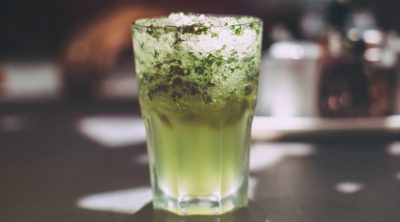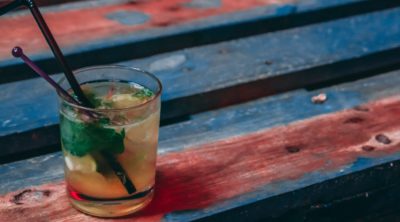
Pears have been one of the world’s favorite fruits for over thousands of years. They are also considered ideal for manufacturing wine, making it one of the popular beverages all over the world. In this Tastessence article, we bring you a couple of amazing recipes which will teach you how to make pear wine at home itself.
Stir the mixture once 1 – 2 times daily, and add a Campden tablet to kill the naturally occurring bacteria and wild yeast.
Nothing tastes better than a glass of aged, homemade wine, paired with a delicious meal. Wine is made from ripe to overripe fruits, which is the basic and most important ingredient in the whole process.
So, what do you do when life hands you a number of overripe pears? Simple, make wine out of them! Overripe pears usually get discarded. So, isn’t it an excellent way of utilizing them? Needless to say, the quality of the pears should be good. The better the quality, the better the wine will be! Pear wine tastes great, and is very easy to make too. It is crisp and refreshing. Have a look at these recipes, and take your pick.
Traditional wine is made using pears, raisins, and sugar. It has a fruity and light flavor, instead of an alcoholic taste. As far as tannin is concerned, pears and grapes have sufficient tannin in the skins and stems. Therefore, while making pear wine, there’s no need of adding tannin separately.
- Water, 1 gallon
- Very ripe to overripe pears, 5 lb
- Raisins, 1 lb
- Fine sugar, 2 lb
- Acid blend, 1½ tsp
- Pectic enzyme, ½ tsp
- Yeast nutrient, 1 tsp
- Wine yeast, 1 package (enough for 5 gallons)
- First, boil water in a larger container.
- Wash and chop pears and place them in a primary fermentation container.
- Then add sugar and citric acid, and pour water over the fruit. Stir until the sugar has dissolved, and let it cool till it reaches room temperature.
- Add the pectic enzyme, and let the mixture rest for a day.
- After about 24 hours, add the yeast and yeast nutrient. Cover the mixture with a lid, and place it in a dark, warm place. This process is called fermentation. The sugar present in the pear juice will be converted into alcohol with the help of the enzymes present in the yeast.
- Stir this mixture daily for about one week. After a week, pour the mixture into a secondary fermentation container, and gently squeeze out the pulp from the fruit. This container should be an airtight one.
- Leave the mixture in this airtight container for about three months. After that, pour the wine mixture into sterilized wine bottles, and store for approximately 6 – 12 months. Remember, the longer you age the wine, the better it will taste.
- Your pear wine is ready to be enjoyed! Cheese, along with some pear wine, makes an excellent combination.
Apple-pear goes by many names, such as Asian pear, Asian apple-pear, Chinese pear, Japanese pear, etc. It belongs to the genus Pyrus, with the scientific name being Pyrus pyrifolia. It also makes for a delicious wine.
- Ripe Asian apple-pears, 6 lb
- Golden raisins, chopped, ½ lb
- Fine sugar, 1½ lb
- Water, 1 gallon
- Acid blend, 2 tsp
- Pectic enzyme, ½ tsp
- Tannin, ¼ tsp
- Campden tablet, crushed, 1
- Yeast nutrient, 1 tsp
- Champagne yeast, 1 packet
- Boil the water in a large container, and dissolve the sugar.
- Wash and chop the pears. Ensure that you remove the seeds.
- Put the chopped pears in a straining bag along with the raisins. Tie the bag properly, and place it in a primary fermentation container.
- Mash the pears thoroughly, and pour boiling water over the crushed pulp. Cover the mixture and place it in a dark place to cool it to room temperature.
- Next, add a Campden tablet, acid blend, tannin, and yeast nutrient. Mix well, cover the mixture again, and set it aside for about 12 hours.
- Now add pectic enzyme, and cover the mixture again. Wait for about 12 hours, and then add yeast. Now, cover the mixture with a muslin cloth.
- Stir this mixture daily for one week, squeezing the bag gently to get more flavor. After one week, remove the bag and let the solution from it drip for about one hour. Do not squeeze the bag.
- Pour this drained juice into the primary fermentation container, and let it settle for around 24 hours.
- Strain the whole mixture into a demijohn using a fine sieve, and tightly seal the jar. Allow the mixture to ferment for about two weeks.
- When the fermentation ceases, transfer it into a clean jar, and place it aside in a cool, dark place.
- When the wine is clear enough, transfer the wine to sterilized wine bottles, and allow it to age for at least six months.
- Your homemade Asian pear wine is ready!
So, wasn’t this really simple? We know you can’t wait to taste the wine, but the key to making some incredibly tasty wine is patience! Remember, the older the wine, the better is the taste!


